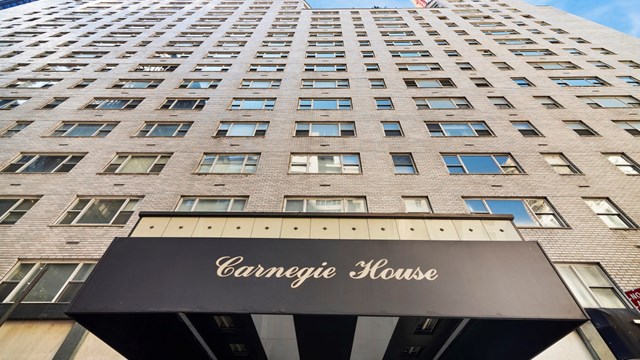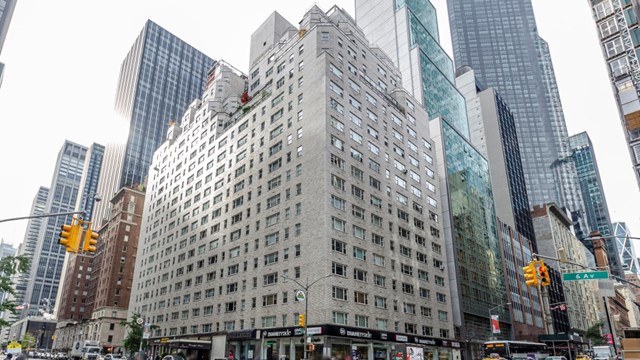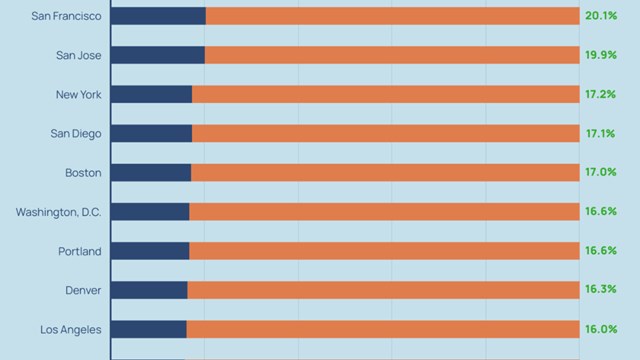All healthy co-ops or condos possess healthy bank accounts. One way to make sure that financial glow stays bright is to infuse it with extra income, above and beyond the usual monthly fees and payments. There are a number of options for bringing extra revenue into the financial fold. The possibilities range from converting unused space into health club facilities, to turning your building into an advertising "star." The options are limited only by board member creativity (and a tax code or two).
Gene Andrews, owner of Andrews Building Corp., a property management firm in Manhattan, points out that all co-ops should consider their tax code status before delving into any outside money-making options. Co-ops are subject to Section 216 of the Internal Revenue Code, otherwise known as the 80/20 rule. Eighty percent of a co-op’s income must be obtained directly from shareholders, while up to 20 percent can come from outside sources. "If it goes to 22 or 25 percent and it is audited, a co-op will lose its tax status," Andrews notes. Which isn’t to say that a co-op should refrain from earning extra money; it just should be wary of earning too much.
A Tidy Little Profit
One of the first things to consider when looking at revenue options is what sort of assets are going unused within the building. Often common areas or basements sit stagnant, simply collecting dust and not being used to their full potential. The installation of storage units or bike racks, for example, benefits both the building and its residents by bringing in rental revenue and increasing the value of the space.
As a relatively low-cost investment, basement storage units provide substantial revenue with a minimum of fuss. Boards have the option of either renting or buying the units or even engaging in a profit-sharing arrangement with the storage unit service.
"Probably the biggest benefit is that (storage units) help organize common areas and protect items," says Steve Diebold, president of WireCrafters, a Kentucky-based company which produces wire mesh enclosures. "Everybody needs space for suitcases, ornaments and such. It’s like adding closet space."
In addition to convenience, storage units provide significant returns on modest investments. "Why not make some money off that space?" says Stuart Chase, owner of Chase Enterprises. His company works with co-ops and condos to turn unused space into organized, managed storage compartments, which they sell to boards. Chase is conscious of trying to maximize board profits, bringing in staff to survey the area and offer thoughts on cost-saving measures. They might suggest backing units up against existing walls to decrease material expenses. "We look at ways to save people money," Chase says. "If it’s done right, (the building) will be making money within a year."
A&D Steel in Long Island City has sold storage units to more than 1,000 buildings throughout the New York area. A&D president Arnold Roth points out that in addition to profiting the board, the purchase of lockers will benefit residents financially, too. "If the board owns the lockers and then rents them to the residents, the lessees can deduct a portion of the rental fee from their taxes," Roth explains. "If it’s not rented through the board, there is no tax deduction.
Bargold Storage Systems offers another option. They maintain ownership of the storage units and pay the building 25 percent of whatever rent they receive, thereby eliminating all involvement and hassle on the part of the board. "From month one, (the building is) realizing income," says Josh Goldman, executive vice president of Bargold. "We sign individual agreements with the tenants and they’re obligated for no more than a month." Bargold’s typical agreement with a building is eight years, although it may be more where extra installation work is necessary.
Rub-a-Dub-Dub
Cleanliness counts for a lot, including profit for many co-ops and condos. Laundry facilities stand as relatively low-anxiety, money-making options for boards. Dave Tulkop, regional vice president of Coinmach in Roslyn, New York, manages on-site laundry facilities in buildings throughout the New York area, taking care of details and eliminating the need for hands-on management on the part of a building’s board. "Typically, we have a lease agreement where we run the room, service it and collect money. Then we pay a flat monthly fee (to the building)," Tulkop says. "With the lease deal, if we’re paying flat rent, they’re pretty much guaranteed a certain amount of money."
If a building feels that enough people will use the laundry facilities consistently, then the board might want to consider asking for a percentage rather than a fee. "That can be the most profitable, but there is risk involved," Tulkop warns. "With a flat-fee lease, they are guaranteed a certain amount of money. And if use decreases, we take the loss and they don’t have to worry about it."
Denise Savino-Erichsen, vice president of Automatic Industries in Hempstead, New York, also installs and maintains laundry facilities in buildings throughout the Tri-State area. She urges boards to make sure to insist on new equipment when installing a facility. New machinery means fewer service calls and no lapse in customer service as well as more efficient gas and water consumption, all of which saves money on the monthly bills and increases profit. In short, it means the initial investment will be earned back more quickly.
Another convenience that could enhance profits is the debit card system. Forget those days of scrounging under couch cushions for enough quarters to run the dryer. Now residents can use slim, easy-to-carry debit cards to finance that spin cycle. Mac-Gray Services in Manhattan operates 50,000 machines on debit cards, says regional vice president Kevin Fahey. Debit card systems mean that price adjustments can occur more often. Coin-operated machines mean prices must increase a quarter at a time–a relatively large jump for some residents. With the debit card system, increases can be as small as a nickel, allowing for adjustments over the course of one or two years "rather than waiting five years to go up a quarter," Fahey says.
Whether a board is looking to expand its laundry facility or install a new one, research is key. Boards "have to try to decide what they’re trying to accomplish," says Fahey. "Are they trying to make this a profit center or the nicest amenity a building can have or somewhere in between? Talk to laundry companies and get some ideas. If [boards] don’t do their homework, they might not be getting the things they think they’re getting."
Healthy, Wealthy and Wise
Buildings can also increase revenue by adding to the value of their units. One way to do that is to offer a service which increases the quality of life for residents, such as a health club or fitness center. "Health and fitness is not a trend, but definitely a lifestyle component," says Steve Kass, chief executive officer of American Leisure. "There’s a very good convenience factor. It enhances the value of a building and makes it more attractive to residents."
While some buildings house health clubs under strict tenant-landlord terms (with the club simply renting space within the complex), the vast majority of co-ops and condos have clubs built specifically for their site. Membership is restricted to those residents within the building. Resident owners may buy memberships, but more often than not, the membership fees are rolled into monthly dues.
These days, health clubs have moved beyond stationary bikes and rowing machines to encompass everything from children’s play centers, to business and conference meeting areas, to party facility rentals and more. They are becoming more vital to the co-op and condo lifestyle, adding not just simple revenue but owner prestige and increased market value.
A Star is Born
Few New Yorkers can escape the advertisements that paper the city, from bus stops to the monumental images in Times Square. For an increasing number of co-ops and condos, the philosophy has become, "if you can’t beat ’em, join ’em." Advertisements are now adding to the bank accounts. "Buildings with large windowless façades are renting these areas for signs," Andrews says. Sites command fees in the neighborhood of $10,000 to $20,000 a year.
However, according to Michael J. Wolfe, president of Midboro Management in Manhattan, "Obviously, it’s all about location. High-traffic areas such as Riverside Drive and the West Side Highway can command $10,000 a month." Wolfe cautions, "Keep in mind landmarked districts and buildings won’t allow this."
Many unique and attractive apartments and buildings are also in demand as photo shoot sites. Boards can require a percentage of whatever fee the resident is being paid for the use of his or her home, ensuring that shoots do not become too common or disruptive, but also earning extra income for the building at large.
Sans cameras, attractive spaces also may merit rental fees for large roof-top or terrace parties, just as a hotel might charge for the use of its ballroom or conference area.
And Don’t Forget the Fees…
The most common alternative for a board looking to add revenue lies in the tried and true form of rents, fees and taxes. Say a board owns unused ground floor space; now may be the time to consider renting that space out to small retail or professional business. There is no ongoing maintenance or management on the part of the board. Rather, it’s just a flat out business agreement that brings in steady income.
Transfer and sublet fees also provide dollars. Transfer fees arise when an individual sells an apartment. He or she then must pay to the building a percentage of the total cost of the apartment minus the initial cost. Subletting fees require that the owner pays the co-op or condo a percentage of whatever rent they collect on the arrangement. Buildings also may assess penalties. "If you are late, many buildings will collect money on that," Andrews says. "A lot of times for a house rule infraction, the only remedy is monetary."
Whatever the need–whether to install a new elevator or just save for a rainy day–co-op and condo boards consistently face the need for additional revenue. While some remedies might be more pleasant than others–wouldn’t we all rather have lockers than late fees?–the fact remains that a building with a healthy bottom line means a residence with a healthy future.
Ms. Lent is a freelance writer living in Bloomfield Hills, Michigan.







Leave a Comment